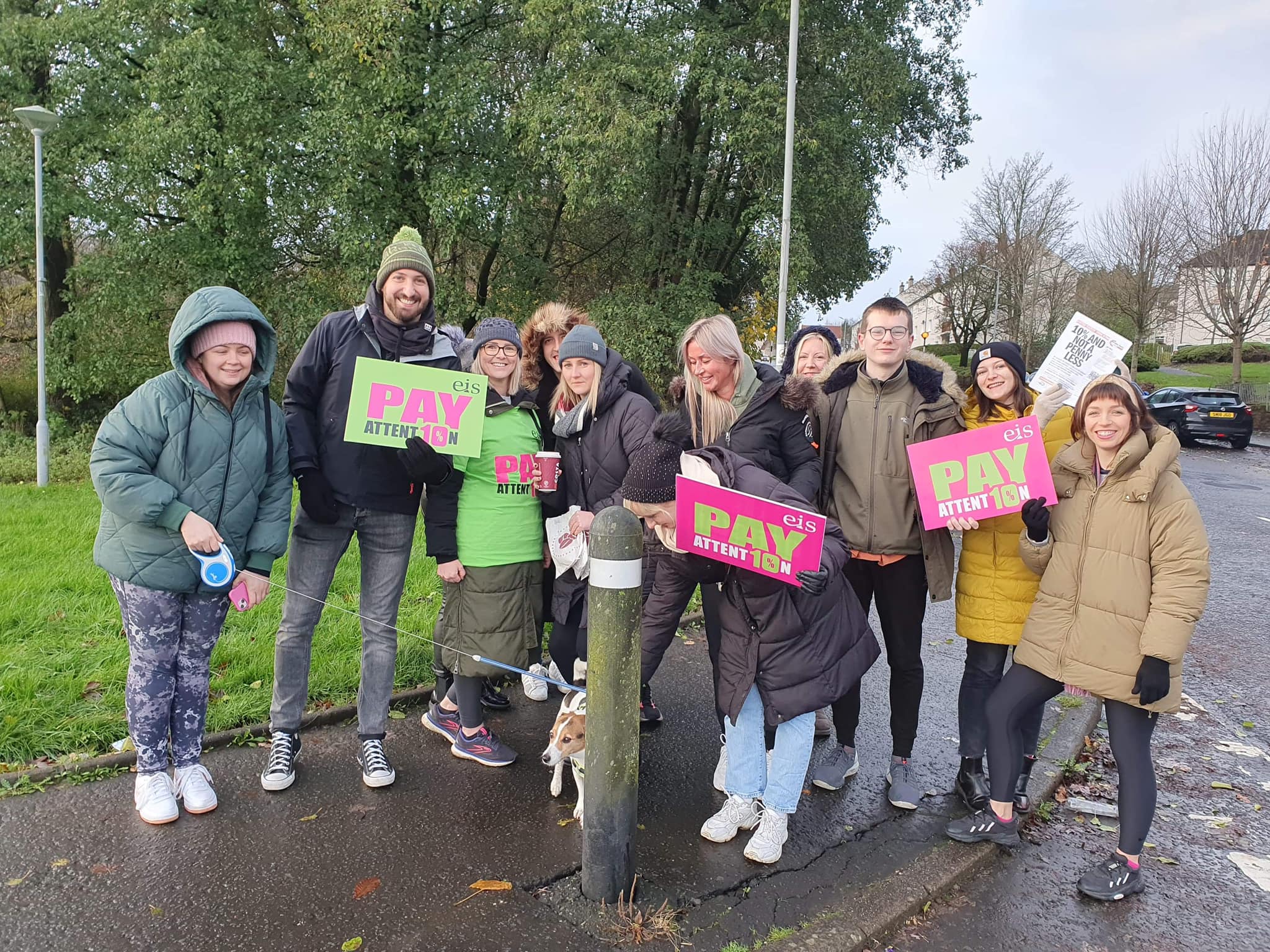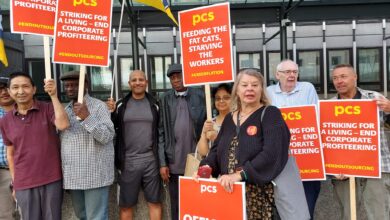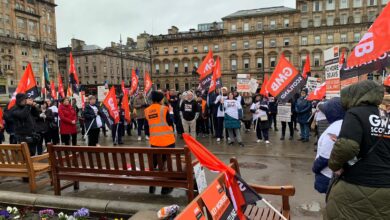Huge response to EIS strike sees schools closed across Scotland

Socialist Party Scotland reporters
Today’s Scottish teachers’ strike by the Educational Institute of Scotland (EIS) union was a massive success. Every single primary school and secondary school across Scotland was closed, with the exception of a handful of primary schools on Orkney and Shetland. Significant numbers of council run nurseries were also shut.
There were hundreds of EIS picket lines across the country and major strike rallies in six cities.
As Socialist Party Scotland member and EIS secretary Jim Halfpenny commented: Today saw the biggest strike by teachers in 40 years because we have gad enough. Our demand for a 10% wage increase has been treated with disdain by Cosla and the Scottish government.
“The latest offer from the employers is an insult. We worked through the pandemic to maintain education. Workload remains excessive while more and more is demanded, with fewer and fewer resources. In response, teachers are offered a derisory pay increase which is nothing short of a substantial pay cut. This cannot be allowed to continue.”
Pamela Manley, an EIS rep from Angus, told us: “Why are we on strike? It’s simple; our working conditions are children’s learning conditions.”
The size of the eduction shutdown reflected the huge wave of anger among teachers. Indeed, this is the first national strike among teachers over pay since the mid-1980s.
The EIS organises 80% of Scottish teachers, by a large majority female, and the scale of the mobilisation reflected the determination of tens of thousands of members to hit back on deteriorating pay, workload and anger at the employers.
The Scottish government rubbed salt in the wounds just two days before the strike by effectively offering the same 5% rise as had been rejected by all teaching unions in September.
Shirley-Anne Sommerville, the SNP education secretary, blurted out the real views of the government when she said: “This is now the fourth offer that has been made. In the same time EIS have not changed their request for a 10% pay increase – even for those on the highest incomes.”
In truth the four offers were 2%, 3,5%, 5% and, on the eve of the strike, a paltry offer for the lowest but 5% for the vast majority . Why should the EIS change their request for 10% with RPI inflation at 14% and rising?
As they have with NHS workers, the SNP sought to blame the unions for cuts in budgets. “The financial situation for the Scottish Government is challenging and additional money for teacher pay means reduced public services elsewhere.”
In truth, the Scottish government have passed on every penny of Tory austerity to public services in Scotland. And it is that reality of continual acceptance of cuts that has brought the Scottish government into head-on collision with the trade union movement.
strikes escalating
Further EIS strikes have been announced for January 10/11 and more dates will be set tomorrow. The SSTA, a smaller teachers union, has also announced strike action for early December.
Also today, UK-wide strikes in Royal Mail and universities saw CWU, UCU and EIS-ULA members on the picket lines. Socialist Party Scotland members were out across Scotland supporting these as well.
W got an enthusiastic reception to our 10% and not a penny less leaflet that called for an escalation of strike action and the building of mass coordinated strikes throughout the trade union movement. We also made the case for the building of a new workers’ party to fight for the interests of trade unions members.
We distributed 1,000 of those leaflets at the picket lines and the well attended strike rallies. Dozens of copies of the Socialist were also sold.
Socialist Party Scotland members also spoke at three of the strike rallies: Brian Smith on behalf of Glasgow City Unison, Jim McFarlane from Dundee City Unison and Leah Ganley, secretary of Inverness Trades Council.
Judging by the determination of today’s strike, teachers will be fighting into 2023 for not a penny less than 10%.



